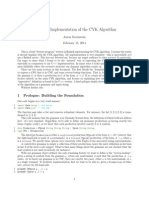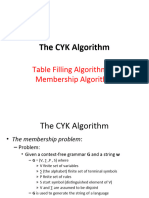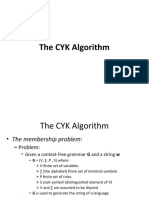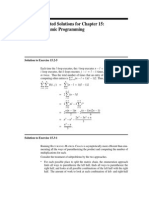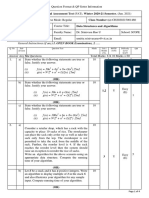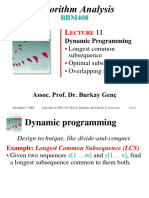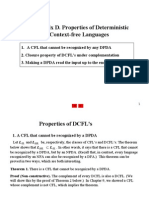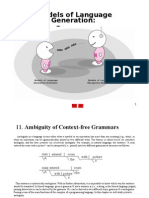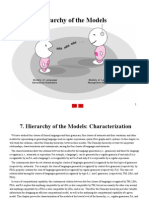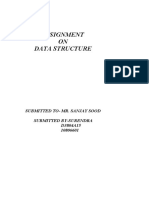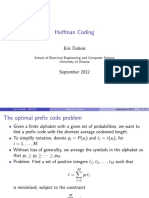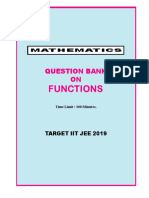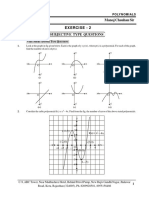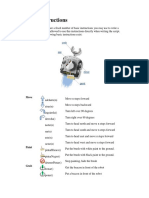0% found this document useful (0 votes)
850 views7 pagesAppendix F. CYK Algorithm
The CYK algorithm decides if a string is in the language of a context-free grammar in O(n3) time. It constructs an n×n matrix where each entry Vij represents the set of nonterminals that can derive the substring wij. The entries are computed by combining adjacent substrings that nonterminals in the grammar can derive. If the start symbol is in the bottom right entry Vnn, then the string is accepted as part of the language.
Uploaded by
kims3515354178Copyright
© Attribution Non-Commercial (BY-NC)
We take content rights seriously. If you suspect this is your content, claim it here.
Available Formats
Download as PPT, PDF, TXT or read online on Scribd
0% found this document useful (0 votes)
850 views7 pagesAppendix F. CYK Algorithm
The CYK algorithm decides if a string is in the language of a context-free grammar in O(n3) time. It constructs an n×n matrix where each entry Vij represents the set of nonterminals that can derive the substring wij. The entries are computed by combining adjacent substrings that nonterminals in the grammar can derive. If the start symbol is in the bottom right entry Vnn, then the string is accepted as part of the language.
Uploaded by
kims3515354178Copyright
© Attribution Non-Commercial (BY-NC)
We take content rights seriously. If you suspect this is your content, claim it here.
Available Formats
Download as PPT, PDF, TXT or read online on Scribd
/ 7





